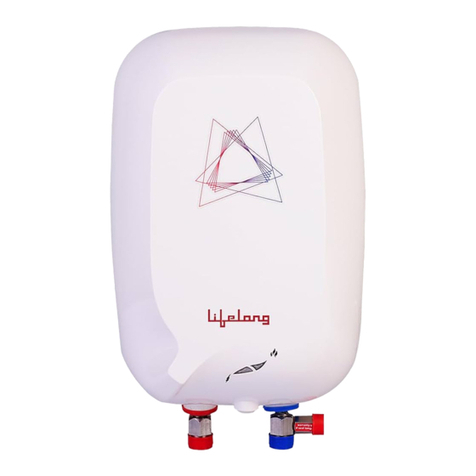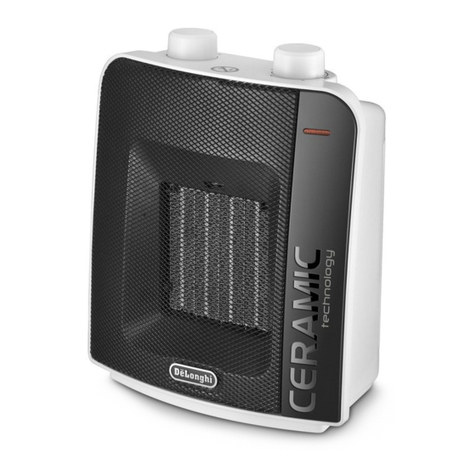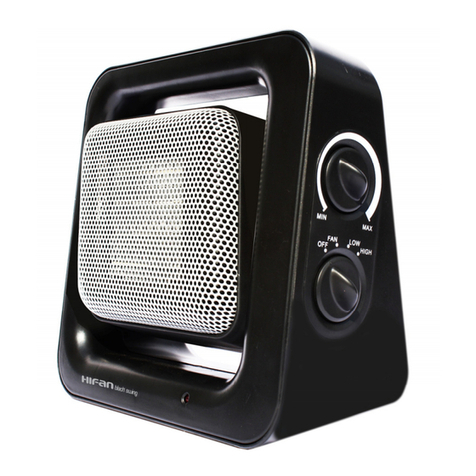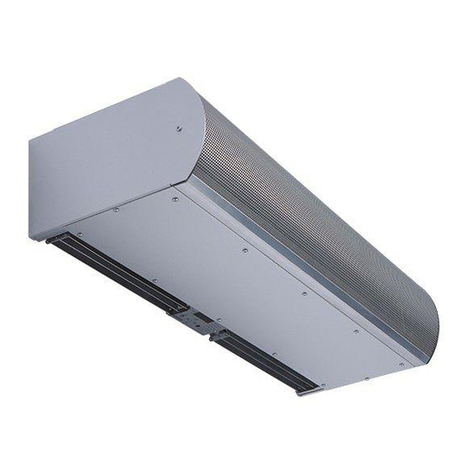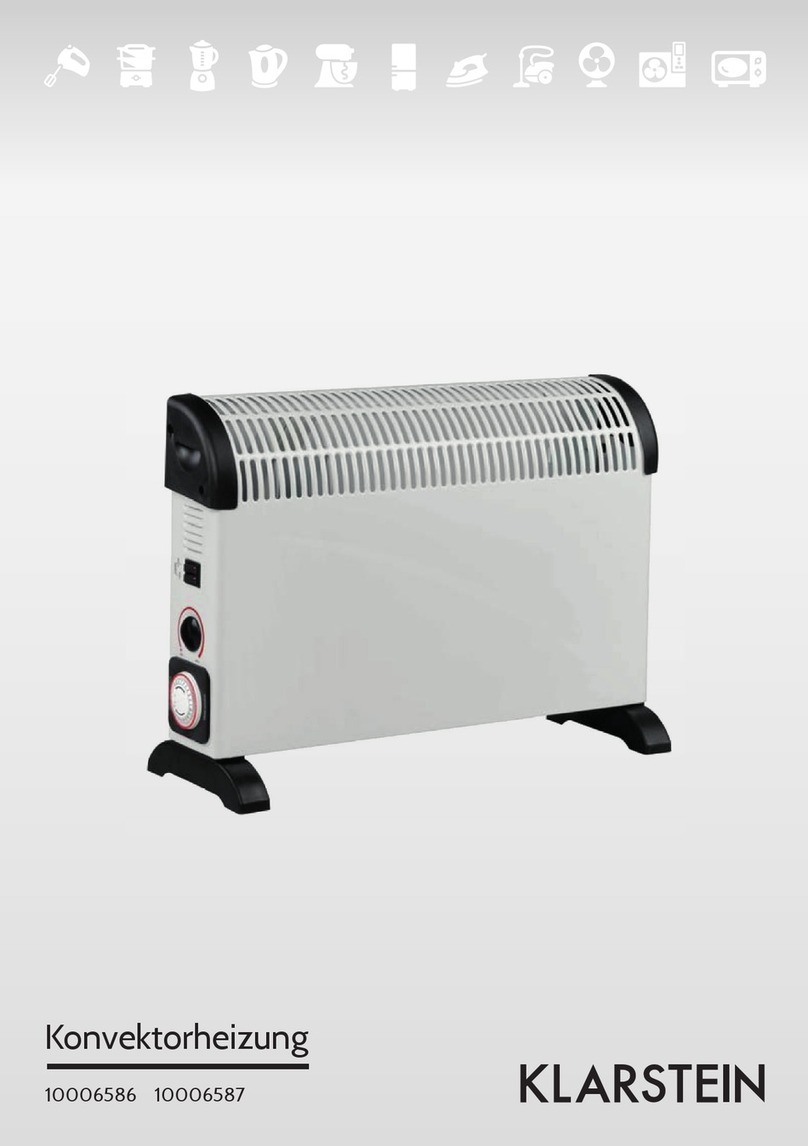Bard HI-BOY Guide

I
u
THE
WALL
MOUN'PM
HI-BOY
COMBINATION
GASIELECTRIC
USER'S
INFORMATION
MANUAL
BARD
MANUFACTURING
COMPANY
Bryan,
Ohlo
43506
WARNING:
If
the
information
in
this
manual
is
not
followed
exactly,
a
fire
or
explosion
may
result
causing
property
damage,
persond
injury
or
loss
of
life.
*
Do
not
#tom
or
use
gasoline
or
other
flammable
vapors
and
liquids
in
the
vicinity
of
this
or
any
other
appliance.
*
WHAT
TO
DO
IF
YOU
SMELL
GAS
Do
not
try
to
light
any
appiiiace
Do
not
touch
any
electrical
switch;
do
not
use
any
phone
in
your
building.
Immediately
call
your
gas
supplier
from
a
neighbor's
pbone.
Follow
the
gas
supplier's
instructions.
If
you
cannot
mch
your
gas
supplier,
call
the
fire
department.
*
Installation
and
scrvice
must
be
performed
by
a
qualified
inatdler,
service
agency
or
tbe
gas
supplier.
1
Since
1914..Mrmng,
.heed
just
as
plumed.
Manual:
2100-148
Rw.
H
Supersedes:
Rev.
G
File:
Volume
111,
Tab
20
Date:
November
1995

3
General
The warnings shown on the cover of this manual and the
information on the following pages are very important
and should be fully read and understood by the operator
of this equipment. Please take the few minutes necessary
to completely read this booklet, and if there are any
questions when you are through, ask your installer to
review them with you. Please retain this booklet for
future reference.
Rating Plate Information
Record the manufacturer’s name, unit model number
and serial number below. These are on your unit rating
plate. Record installation date, which is important for
warranty purposes.
Also fill in the installer’s name, address and telephone
number. This will be handy if you have questions later.
Some companies install an identification tag on units
they install or service. If not, ask for the information.
Your Unit Information
Unit Type ____________________________________
Manufacturer’s Name __________________________
Model Number ________________________________
Serial Number ________________________________
Date Installed _________________________________
Installer/Service _______________________________
Address ______________________________________
City/State/Zip Code ____________________________
Telephone Number _____________________________
IMPORTANT SAFETY PRECAUTIONS
A. Signal Words
Years of safe, dependable service, are assured when
you understand and follow all safety precautions.
Remember: Your unit contains flames, gas, electric-
ity, rotating parts and metal edges.
Signal words “Warning” and “Caution” alert you to
potential hazards.
“Warning” alerts you to situations that could cause
series injury or property damage.
“Caution” alerts you to situations that could cause
minor or moderate injury.
B. Safety Precautions
These are some of our most important safety
precautions; others are throughout this manual.
Please read and follow them.
1. Gas and Combustion Products
Warning
Any condition that will allow gas or combustion
products to enter unit area can cause nausea, asphyxia-
tion or fire resulting in damage, injury
or death.
Natural gas and propane (LP) gas have characteris-
tic odors. When your unit is operating correctly, you
should not smell any unfamiliar odor. Normally,
burning gas with air produces combustion products
which contain carbon dioxide, oxygen and water
vapor.
Aldehydes have a strong pungent, acrid smell that
can cause nausea.
Carbon monoxide is tasteless, colorless and odor-
less. It can cause headaches, flu-like symptoms or
nausea. We refer to all these symptoms as nausea in
this manual. It can also cause death by asphyxiation.
Warning
Any unfamiliar smell can alert you to presence
of gas or aldehydes. If you detect any unfamiliar
odor call service technician.
Warning
Do not block or cover combustion openings in the
unit door. Blocking or covering these openings
could cause nausea, asphyxiation or fire resulting
in damage, injury or death.
Warning
A loud noise may mean faulty burner ignition. If
your unit makes a loud noise, turn it off. If you
don’t turn your unit off, it could cause fire or an
explosion, resulting in damage, injury or death.
2. Storage and Use of Flammable, Corrosive and
Combustible Products Near Your Unit.

4
Important
Should overheating occur, or the gas supply fail
to shut off, shut off the manual gas valve to the
unit before shutting off the electrical supply.
FIGURE 1
FIGURE 2
FIGURE 3
AIR FILTERS
It is the user’s responsibility to check the condition of
the air filters on at least a monthly basis when the unit is
in use and to clean or replace whenever it is necessary.
Permanent Type Filter (usually foam type) are washable.
Use a solution of soapy water, followed by a rinse in
clear water and then dried by tapping the frame against a
solid object.
Never operate the unit without proper filters in place.
Never substitute a throwaway (fiberglass) for a perma-
nent (foam) type.
Return air filter size is 20 x 30 x 1 (throwaway) and is
serviceable from the left side of the unit as shown in
Figure 2.
Fresh air filter size is 4 x 26 x 1/2 and is a permanent
type filter, refer to Figure 2 for service location.
AIR CONDITIONING START UP
PROCEDURE CRANKCASE HEATERS
Single and three phase models have an insertion well-
type heater located in the lower section of the compres-
sor housing. This is a self-regulating type heater that
draws only enough power to maintain the compressor at
a safe temperature.
Some form of crankcase heat is essential to prevent
liquid refrigerant from migrating to the compressor,
causing oil pump out on compressor start-up and
possible valve failure due to compressing a liquid.
The decal in Figure 4 is affixed to all outdoor units
detailing start-up procedures. This is very important.
Please read carefully.
FIGURE 4
Warning
Never store or use flammable liquids or vapors
near or on your unit. These include gasoline,
kerosene, cigarette lighter fluid, cleaning fluids,
solvents, paint thinners or painting compounds.
Flammable vapors can travel great distances
before igniting. Flammables could cause fires or
explosions and result in damage, injury or death.
Warning
Never store or use anything near or on your unit
that can produce vapors that are corrosive to gas-
fired appliances. Vapors from products containing
chlorines, fluorines, bromines and iodines can
cause vent system or heat exchanger failure.
Examples of such products are spray or aerosol
containers, detergents, bleaches, cat litter, waxes,
adhesives, solvents and other cleaning compounds.
Vent system or heat exchanger failure could cause
nausea, asphyxiation or fire, resulting in damage.
CLEARANCES
There are certain minimum installation clearances from
the unit cabinet and sheet metal plenum attached to the
unit to any combustible materials. These clearances for
each model are shown on the unit rating plate (located
on the right side) and are the responsibility of the
installer during the installation of the appliance.
It is the user’s responsibility to make sure these clear-
ances are always maintained thereafter. Additionally, a
minimum of 30 inches for serviceability is required from
the right side of all models.
COMBUSTION AND VENTILATING AIR
It is the responsibility of the user to assure that the
important flow of combustion and ventilating air is not
obstructed from reaching the unit.
Do not block or obstruct air openings on the unit.
LIGHTING AND SHUTDOWN
INSTRUCTIONS
Refer to Figure 3 for general location of components
referenced in the following “Lighting and Shutdown
Instructions.” These components are located behind the
“Burner Access Door”.

5
IMPORTANT
THESE PROCEDURES MUST BE FOLLOWED
AT INITIAL START-UP AND AT ANY TIME
POWER HAS BEEN REMOVED FOR 12
HOURS OR LONGER.
TO PREVENT COMPRESSOR DAMAGE
WHICH MAY RESULT FROM THE PRESENCE
OF LIQUID REFRIGERANT IN THE
COMPRESSOR CRANKCASE.
1. MAKE CERTAIN THE ROOM THERMOSTAT IS IN
THE "OFF" POSITION (THE COMPRESSOR IS
NOT TO OPERATE).
2. APPLY POWER BY CLOSING THE SYSTEM
DISCONNECT SWITCH. THIS ENERGIZES THE
COMPRESSOR HEATER WHICH EVAPORATES
THE LIQUID REFRIGERANT IN THE CRANKCASE.
3. ALLOW 4 HOURS OR 60 MINUTES PER POUND
OF REFRIGERANT IN THE SYSTEM AS NOTED
ON THE UNIT RATING PLATE, WHICHEVER IS
GREATER.
4. AFTER PROPERLY ELAPSED TIME, THE
THERMOSTAT MAY BE SET TO OPERATE THE
COMPRSSOR.
5. EXCEPT AS REQUIRED FOR SAFETY WHILE
SERVICING--DO NOT OPEN SYSTEM
DISCONNECT SWITCH.
7961-061
CIRCULATION BLOWER CONTROL
INITIAL START UP
When electrical power is first supplied to the unit, the
low speed blower relay will automatically energize and
the indoor motor will run for one minute. This run in
period will only occur during initial power up or when
the power supply is interrupted.
HEATING OPERATION
One minute after main burner ignition, the circulating
blower will start on low speed. Following termination of
the heating cycle, a two minute delay will keep the
circulating blower running. Any major deviations from
these times should be reported to your service agency.
COOLING OPERATION
Immediately upon a call for cooling, the circulating
blower will be energized on high speed. At the end of the
cooling cycle, the compressor will stop and the circulat-
ing blower will continue to run for one minute.
MAINTENANCE INSTRUCTIONS
The unit should be inspected annually by a qualified
service agency.
Routine inspection and maintenance procedures are the
responsibility of the owner/user and are outlined below.
ROUTINE MAINTENANCE
Air Filters—Check the condition at least monthly when
the unit is in use, and replace (throwaway, fiberglass
type) or clean (permanent, foam type) as necessary.
Reference Figure 2.
Lubrication Requirements—The indoor circulating air
blower motor and outdoor circulating air fan motor are
permanently lubricated and require no re-oiling. The
combustion air blower motor should be re-oiled once a
year with 3-4 drops SAE20 motor oil.
Warning—Turn off electrical power supply to prevent
injury from moving parts or electric shock.
ROUTINE INSPECTION
Inspect the physical support of the unit annually to make
sure it is securely fastened to the building. Also look for
any obvious signs of deterioration.
Inspect the pilot and main burner adjustment at the
beginning of each heating season. Refer to Figure 5 and
Figure 6 for general guidelines. Call qualified service
agency for any adjustments.
Inspect the vent terminal for any obvious deterioration
and to make sure it is free and clear of any obstructions.
REPLACEMENT PARTS
Replacement parts for the gas/electric units are available
through local distributors.
A replacement parts list manual is supplied with each
unit. When ordering parts or making inquiries pertain-
ing to any of the units covered by these instructions, it is
very important to always supply the complete model
number and serial number of the unit. This is necessary
to assure that the correct parts (or an approved alternte
part) are issued to the service agency.
FIGURE 5

6
FIGURE 6
Observe the main burners in operation. The flame
should be mostly “blue” with possibly a little orange (not
yellow) at the tips of the flames. The flames should be in
the center of the heat exchanger compartments and not
impinging on the heat exchanger surfaces themselves.
Observe the fire until the blower starts (there is a normal
delay period until the heat exchanger warms up). There
should be no change in the size or shape of the flame. If
there is any wavering or blowing of the flame on blower
start-up, it is an indicattion of a possible leak in the heat
exchanger.
FRESH AIR DAMPER ASSEMBLY
The fresh air damper assembly is shipped in the return
air chamber accessed from the back of the unit. Remove
the shipping screws and damper assembly. Attach the
damper assembly to the blower service door as shown in
Figure 2. The damper assembly includes a permanent
filter that can be easily removed for cleaning. See Figure
3.
The damper blade is shipped in the full open position
allowing the maximum amount of fresh air at all times.
If no fresh air is desired or if barometric operation (blade
opens when blower starts) is desired, remove and
reinsert the plastic canoe clips as shown in Figure 7.
All capacity, efficiency and cost of operation information
as required for Department of Energy “Energyguide”
Fact Sheets is based upon the fresh air blank-off plate
(BOP-1A) in place and is recommended for maximum
energy efficiency. The blank-off plate is available upon
request from the factory and is installed in place of the
fresh air damper shipped with each unit.
FIGURE 7
FILTER
A one inch throw away filter is supplied with each unit
taped to the back of the unit. This filter is installed by
removing the filter service door located on the left side
and sliding the filter into position, as shown in Figure 3.
Table of contents
Popular Heater manuals by other brands

Saunatec
Saunatec 1106-105 Installation and operating instructions
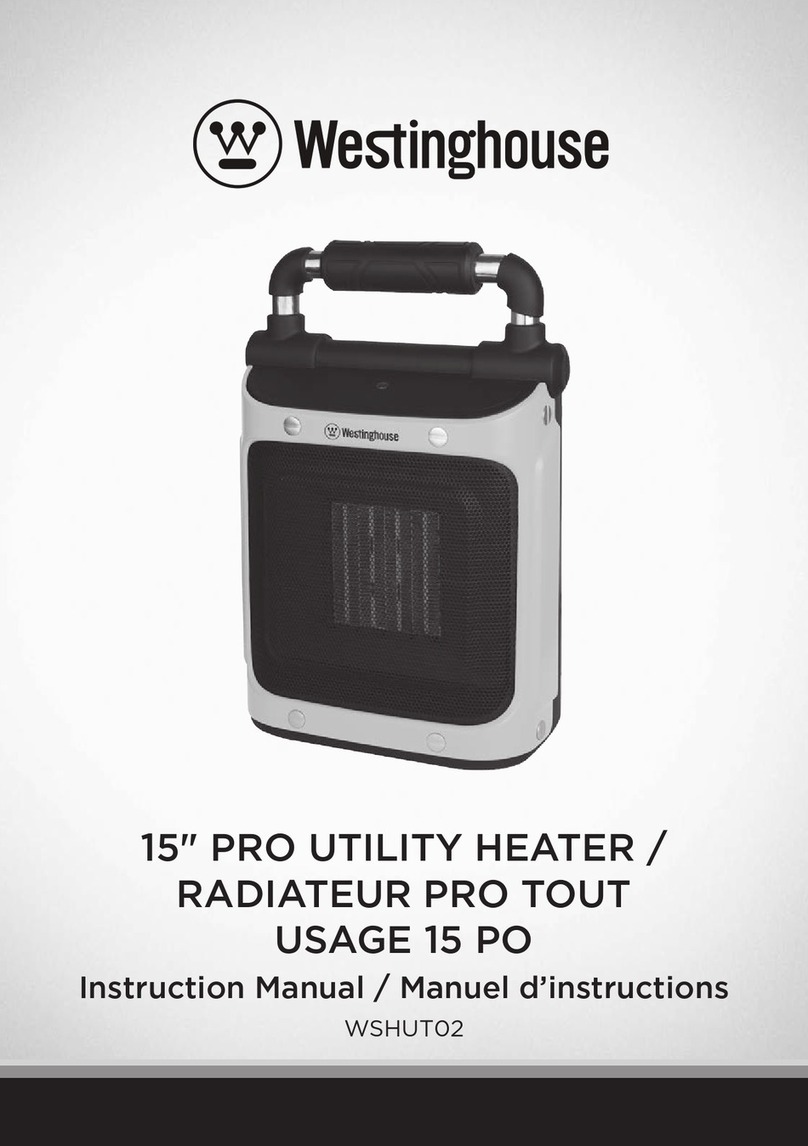
Westinghouse
Westinghouse WSHUT02 instruction manual
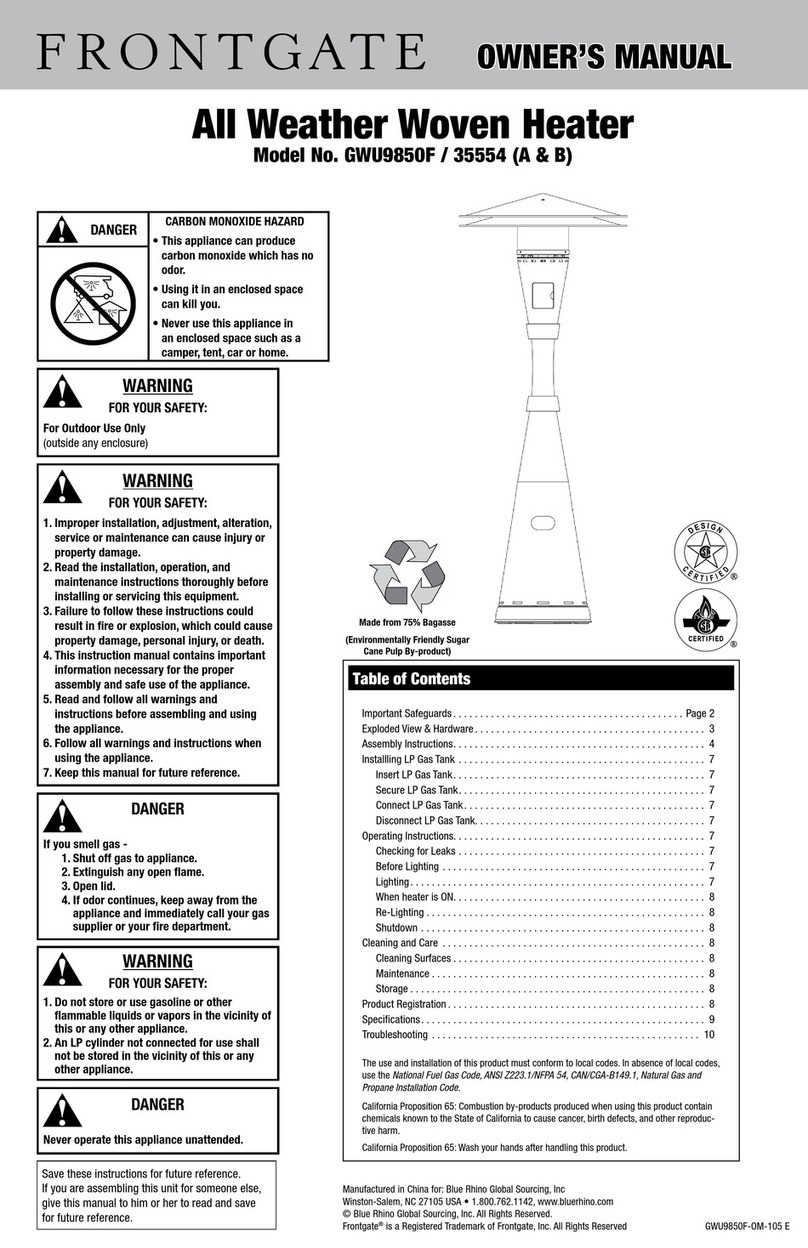
Frontgate
Frontgate GWU9850F / 35554A owner's manual

Campingaz
Campingaz Comfort Heat IR Instructions for use
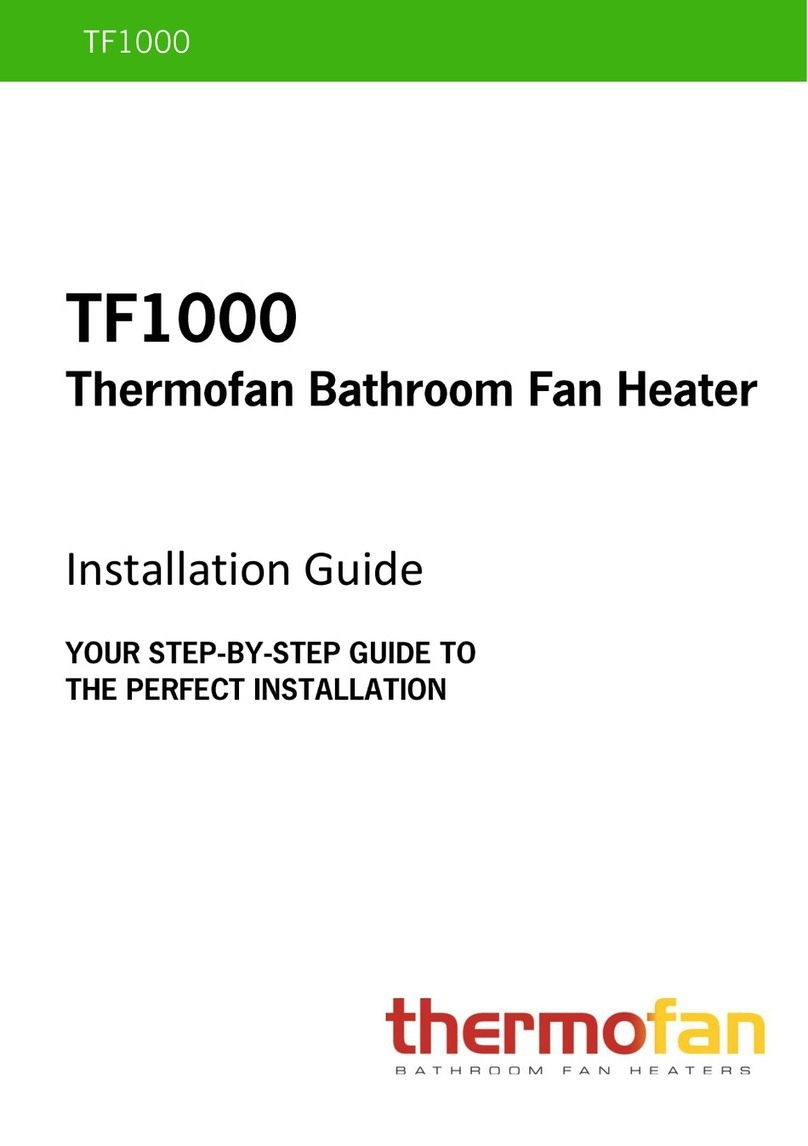
THERMOFAN
THERMOFAN TF1000 installation guide

HIRED-HAND
HIRED-HAND Super Saver XL Conversion instructions

winkler
winkler WOCP operating instructions
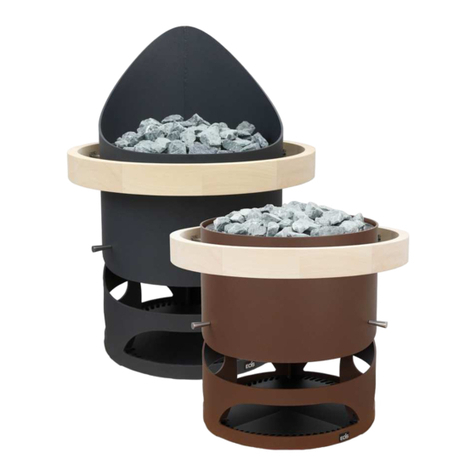
EOS
EOS Zeus HD Installation and operating instructions

Royal Sovereign
Royal Sovereign PRO HWS-480 owner's manual
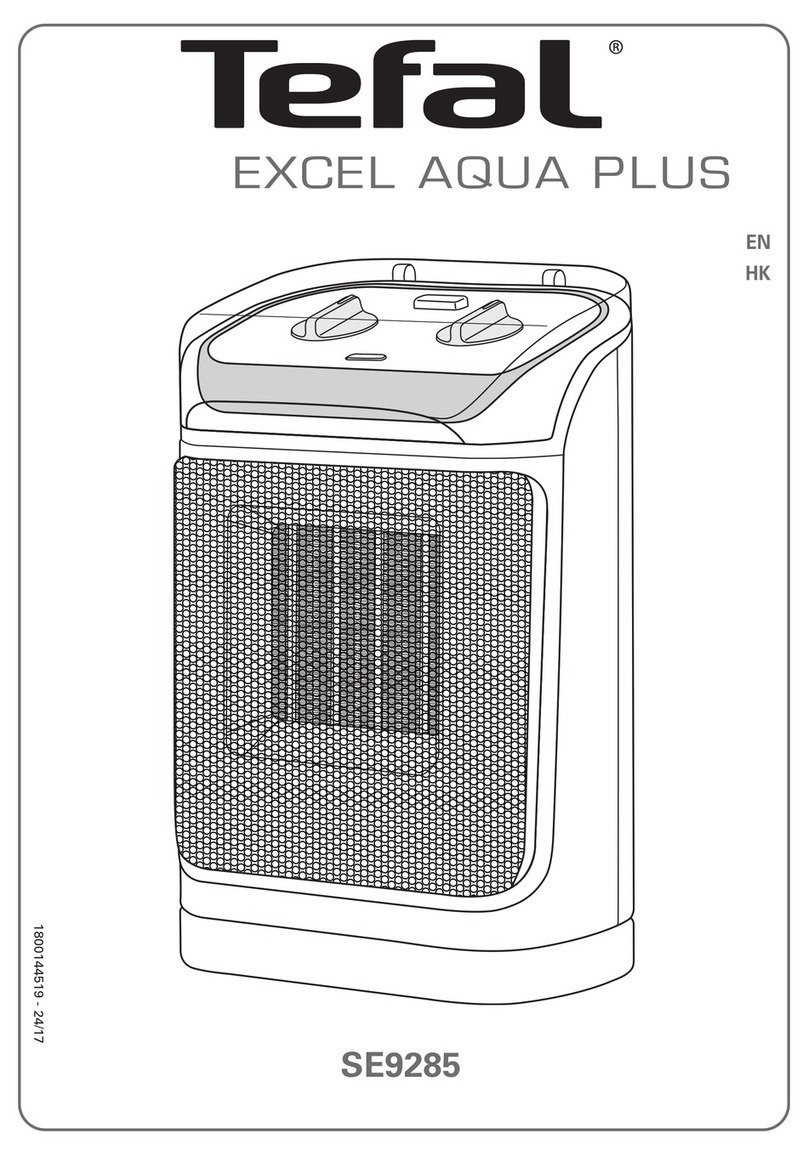
TEFAL
TEFAL Excel Aqua Plus manual
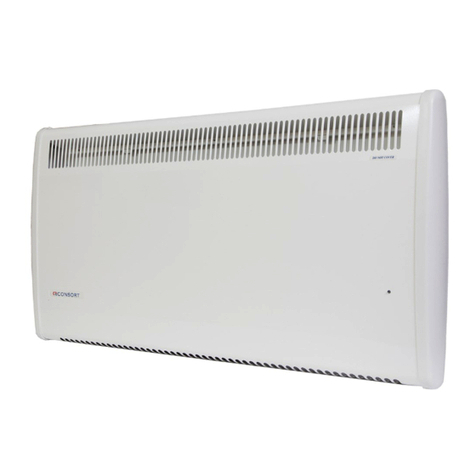
Consort
Consort PSL050/SS Installation & Control Guide
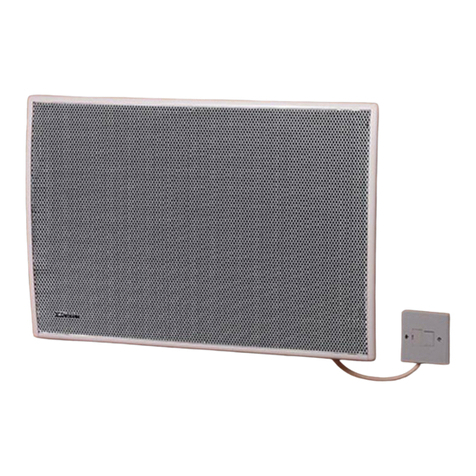
Dimplex
Dimplex RPX075N Installation and operating instructions
